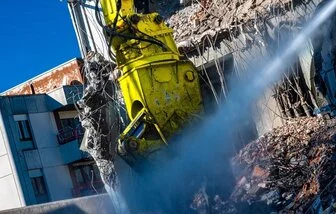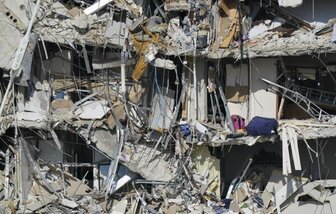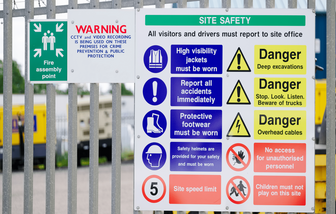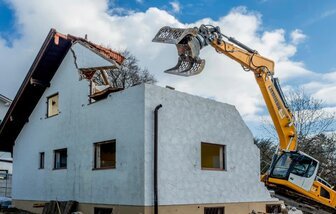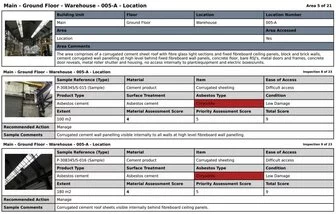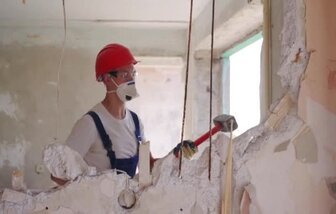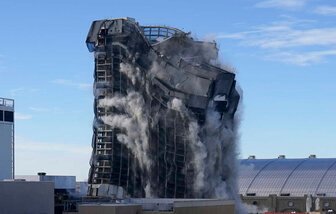What is manual demolition?
Manual demolition works well to preserve other portions of the structure that a property owner wants to preserve or nearby buildings.
Manual demolition overview
Among the methods, manual demolition is found to be most applicable for most sites, especially for areas located in the urban zone.
The safety of the demolition process would greatly depend on the type of procedure used. This is the main reason why all demolition jobs require careful planning and execution.
Heavy demolition equipment may also bring too much impact on the area of the demolition, such as vibration, shock, and noise.
Manual dismantling is very helpful to minimise the effects of these disruptions while making sure that a structure is taken down efficiently.
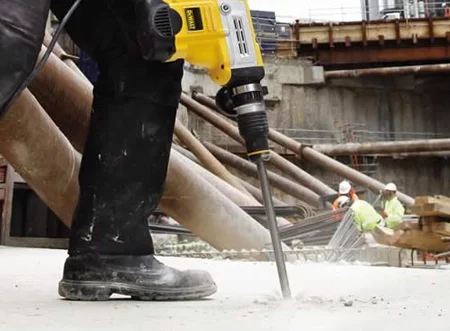
A common denominator for most demolition activities is to ensure the safety of the dwellers.
To carry out manual demolition works, various tools and equipment can be used such as:
- Jackhammers
- Pneumatic hammers
- Wire and winch systems
- Hydraulic wedges
- Drills
- A wire saw cutting machine
- Sledgehammers
- Oxy-acetylene torch
- Mini-loaders and mini-excavators
Whether it is mechanical or manual demolition, there should always be proper measures in place to prevent sudden movement of the remaining structures before the completion of a demolition project.
People demolish structures for various reasons. It could be because of the following reasons:
- An existing damage that needs to be repaired
- An additional space needed for the business or residence
- An improvement or renovation of an old structure.
A common denominator for most demolition works is to ensure the safety of the dwellers.
Depending on the type of structure and the needed job required, the dismantling of a structure uses various methods. The procedure of demolition also varies with the size of the building and the availability of equipment. Among the methods, manual demolition is found to be most applicable for most sites, especially for areas located in the urban zone.
The safety of the demolition process would greatly depend on the type of procedure used. This is the main reason why all demolition jobs require careful planning and execution.
What is the difference between Manual demolition and Mechanical ?
Various types of demolition methods can be used alone or in combination depending on the required job. Contractors and engineers, however, choose the method that is found to be the safest and the simplest to carry out. For instance, if the job requires taking down a smaller structure, a simple manual demolition works oftentimes.
Manual dismantling or manual demolition is carried out by using tools that are portable such as a sledgehammer, drillers, and jackhammers. It is often done in sequence. Meanwhile, mechanical demolition, which typically involves the pulling down and knocking down of a structure, uses heavier equipment like bulldozers, wrecking balls, rams, cranes and excavators.
What is the sequence followed by a manual demolition?
Like the other demolition methods, the manual dismantling of a property is generally done in the reverse order when a structure is built. The top-down manual method of demolition starts at the roof to the ground. The sequence, however, is determined by the following:
- Actual site condition
- Layout of the building and its structure
- Restraints that were noted at the stage of the demolition planning.
Here is the sequence of a manual dismantling of a structure:
- The first stage when taking down any structure is the disconnection of all utilities, including drainage connection, water lines, phone lines, and electricity.
- The first part portion of the structures that should be demolished include the following:
- Canopies
- Cantilevered structures
- Verandas
- The features that are found on the external walls before demolishing other structures on each floor.
- Before demolishing a roof, all structures located at the higher level should be taken down first following the top to bottom sequence.
- The floor slabs shall be demolished from the mid-span towards the supporting beams. Each floor beam is taken down starting from the cantilevered beams to the secondary beams before the main beams.
- For walls, the non-loading bearing walls are taken down before the demolition of the load-bearing walls. Similarly, columns and load-bearing walls are taken down only after the removal of the beams on top.
When can manual demolition be applicable?
Whether it is a commercial or residential structure, manual demolition works best for smaller structures. Contractors also find it effective for structures that are located in a narrow space that are often present in urban areas. Unless a job needs to take down a whole block of buildings in a city, the manual method only targets a specific portion of the structure to be taken down.
Using a top-down manual method with a jackhammer or a pneumatic hammer is safer to use and is very effective to take down small concrete buildings. It has a broader scope of application. However, like most demolition methods, this creates significant noise and dust impacts on the area.
Which parts of the building are better to demolish Manually and why?
Manual demolition uses tools that are operated to take down a portion of a structure that does not need large equipment. This is done for the purpose of ensuring safety in the structure and the preservation of other parts. Floor slabs, for instance, may be demolished using a jackhammer.
Manual taking down floor slabs, particularly in localised places or narrow spaces may also use breakers that provide good mobility and has a wide range of applications. Walls can also be taken down using a sledgehammer.
Cantilevered features may be dismantled using saw cut and lift. Slabs can be cut into smaller sizes for easy removal before it is lifted away. Exterior beams and interior beams can also be demolished through the gradual breaking of the concrete. This can then be moved towards the ground using a wire and winch. The wire saw cutting machines can also be used to cut massive structures allowing precise separation while drills are also good to cut big structures.
The important thing to consider when performing a manual demolition of the structure is the stability of each portion that should be taken down. Following the sequence, everything should be assessed carefully from the roof to the floors. This is to make sure that the structure will not collapse due to an improper removal of a framework. Contractors and engineers are also taking into account the support that is installed for a certain structure.
What is demolition?
The process involves Rotational hydraulic shears and rock-beakers attached to specialist excavators are also used to cut or break through wood, cut steel and crush concrete which reduces the structure to a rubble
What is a premature collapse?
TPremature collapse of these structures is one of the main causes of serious injuries resulting from demolition activities. The most common type of incidents is the lack of planning before commencement
Demolition hazards
If a demolition project is well planned the risks of injury and death can be minimised. It should be emphasised that the planning and execution of a demolition project should only be done by appropriately competent persons.
What is a section 80 demolition notice?
If your considering demolishing an existing building you will need to submit a demolition, Section 80 Notice together with your (RAMS) to your local authority according to section 80
What is a pre-demolition survey
When a building is to be demolished the (non-domestic) client (usually the property owner) has a duty to provide pre-demolition information to the designer and contractor. This will involve a pre-demolition investigation and survey.
How to manage asbestos in demolition
One of the key issues arising in demolition these days is asbestos. Widely used in construction projects by previous generations, asbestos is now accepted as the UK’s largest occupational killer and there are strict guidelines for the safe removal
How to manage a demolition site
Where any redundant building, structure plant has contaminated flammable materials, precautions must be observed to avoid fires and explosions. Specialist advice must be required to identify any residual
What is manual demolition?
Among the methods, manual demolition is found to be most applicable for most sites, especially for areas located in the urban zone. The safety of the demolition process would greatly depend on the type of procedure used.
What is non explosive demolition?
You do not need explosives for every demolition job. Most people assume that for a demolition to be a demolition there is a need for a kaboom. It does not have to be that way
Structural demolition
Structural demolition is not a walk in the park. Total Group is well placed to deliver a safe, environmentally friendly and a budget wise project. We focus on a process that will assist you to salvage and recycle material for reuse.
What is high risk demolition?
The building contractor needs to make a thorough risk assessment to look for both risks and hazards. Control measures are then implemented to prevent any accident that could be fatal.
Controlled demolition methods
If you have a large building that requires demolishing, you cannot rely solely on manual demolition to get the project completed. There is only so much that a team of demolition contractors.
Ready to start your project ?
Let's Work Together
Please complete the form below and someone from the Total team will be in touch.

